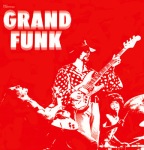The psychedelic period in rock music history permitted musicians and artists to experiment with the genre in ways greater than their predecessors had ever enjoyed. Rock and Roll music had caught on in rapid steps in the 1950’s and continued its pace into the 1960’s, albeit with a sidestep underground in the U.S. around 1960. But even as the next generation of youth picked up guitars and drumsticks, or practiced on organs, pianos and saxophones, the standard format of a rock song changed little. Songs were still usually two to three minutes long with an almost obligatory verse-chorus-verse-chorus-bridge-chorus format. The sound of rock and roll changed but not the general song format.
What the psychedelic movement encouraged was longer instrumental sections and more serious musicianship. It also gave songwriters new lyrical freedom as the usual songs about love and heartbreak or dancing and partying were no longer essential for recording a hit song. The new lyricists wrote about social issues, poems, fantasy, literature, history, war, death, the occult, or simply enigmatic lyrics that the listener was free to interpret in his or her own way. And, although it’s not true for all new artists of the period, LSD certainly played an enormous contributing role in the new found musical expression.
Prior to the advent of psychedelia and rock music (for the “and roll” was not longer suitable to this more serious style of pop), two new musical styles were beginning to take shape. The drive to fuel guitars with distortion or fuzz tone effects and the desire to master and build on electric guitar solo techniques along with a more assertive and aggressive style of singing and playing eventually led to the sub-genre of heavy metal. Meanwhile, other artists saw the studio as a place to experiment with rock and attempt to create something that went beyond expectations of the rather simplistic approach to recording. These were the earliest days of progressive rock.
 The year 1966 was a pivotal one as psychedelic rock was beginning to emerge. The Beach Boy’s “Pet Sounds” and The Mothers of Invention album “Freak Out!” are both seen as albums within the rock genre that took giant steps toward initiating the progressive rock movement. On the heavy side, Cream introduced the world to a heavier sounding version of electric blues with their debut “Fresh Cream”. The Yardbirds recorded songs like “Happenings Ten Years’ Time Ago” and “Stroll On”, their rewrite of “Train Kept A Rollin’” for the movie “Blow Up”. And The Who released their first album as well, including their hit, “My Generation” and the growling, bulldozing bass solo, “The Ox”. By the end of the year, The Jimi Hendrix Experience had recorded “Purple Haze” and Jefferson Airplane were working on their sophomore album. Both progressive rock and heavy metal were still a few years away from developing into name-worthy sub-genres of rock but the basic molecules were in place. All they needed was a catalyst.
The year 1966 was a pivotal one as psychedelic rock was beginning to emerge. The Beach Boy’s “Pet Sounds” and The Mothers of Invention album “Freak Out!” are both seen as albums within the rock genre that took giant steps toward initiating the progressive rock movement. On the heavy side, Cream introduced the world to a heavier sounding version of electric blues with their debut “Fresh Cream”. The Yardbirds recorded songs like “Happenings Ten Years’ Time Ago” and “Stroll On”, their rewrite of “Train Kept A Rollin’” for the movie “Blow Up”. And The Who released their first album as well, including their hit, “My Generation” and the growling, bulldozing bass solo, “The Ox”. By the end of the year, The Jimi Hendrix Experience had recorded “Purple Haze” and Jefferson Airplane were working on their sophomore album. Both progressive rock and heavy metal were still a few years away from developing into name-worthy sub-genres of rock but the basic molecules were in place. All they needed was a catalyst.
Or a Big Bang. Between the years of 1967 and ’68, psychedelic rock came into its own, serving as a Big Crunch to several music styles. Rock and roll, folk, country western, classical, and jazz – all of these and more contributed matter and energy to the explosion that would spawn both progressive rock and heavy metal. If one looks at the ProgArchives list of proto-prog bands and the MetalMusicArchives list of proto-metal bands, more than a few bands and artists can be found on both. 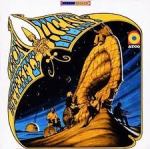 Iron Butterfly, Vanilla Fudge, Jimi Hendrix all released albums during these two consequential years and their music is built on both the foundations of prog and metal, at least as it was back then. Other bands tended to lean more to one side than the other: Blue Cheer and Steppenwolf being more rock, blues, and heavy psychedelic rock, and Jefferson Airplane and the Doors going more for the experimental take. Then there was Pink Floyd who practically invented space rock with their adventures in electric guitar and organ soundscapes.
Iron Butterfly, Vanilla Fudge, Jimi Hendrix all released albums during these two consequential years and their music is built on both the foundations of prog and metal, at least as it was back then. Other bands tended to lean more to one side than the other: Blue Cheer and Steppenwolf being more rock, blues, and heavy psychedelic rock, and Jefferson Airplane and the Doors going more for the experimental take. Then there was Pink Floyd who practically invented space rock with their adventures in electric guitar and organ soundscapes.
Bearing these considerations in mind, it should come as no surprise that the progressive rock album that broke down any remaining barriers did so with a bombastic, distortion overdrive song called “21st Century Schizoid Man” by King Crimson. The band’s debut, “In the Court of the Crimson King” was released in October, 1969 and is often hailed as the first true progressive rock album.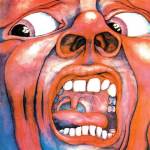 It features an eclectic amalgamation of heavy psych, jazz, classical instruments, folk, and experimental music. Other bands, however, were also busy developing their music into new territory. The Moody Blues were turning standard pop rock into musical adventures by adding various instruments and experimenting with new recording techniques. Yes were busy expanding their songs by adding snippets from show tunes, Beatles references, church choir-inspired vocals sections, jazz, and anything else they could fit in. Meanwhile, the distortion and aggression types were aiming for a heavier, harder sound, first with Jeff Beck and then with Led Zeppelin at the forefront.
It features an eclectic amalgamation of heavy psych, jazz, classical instruments, folk, and experimental music. Other bands, however, were also busy developing their music into new territory. The Moody Blues were turning standard pop rock into musical adventures by adding various instruments and experimenting with new recording techniques. Yes were busy expanding their songs by adding snippets from show tunes, Beatles references, church choir-inspired vocals sections, jazz, and anything else they could fit in. Meanwhile, the distortion and aggression types were aiming for a heavier, harder sound, first with Jeff Beck and then with Led Zeppelin at the forefront.
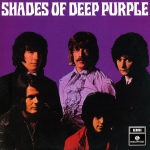 By 1970, the monikers “progressive rock” and “heavy metal” had already been applied to bands in their respective sub-genres. But some bands eluded a swift pigeonholing by straddling both sides of the grey area boundary. Deep Purple are always mentioned as one of the progenitors of heavy metal, however, the advanced talents of Ritchie Blackmore (guitar), Jon Lord (keyboards), and Ian Paice (drums), not to mention bass players who had to keep up (Nicky Simper and Roger Glover), and some of the band’s early songs put them in the proto-prog and prog category (their latest album is a rapturous step back to that style). Uriah Heep are found in a similar vein, attempting lengthy compositions that on occasion included an orchestra and choir.
By 1970, the monikers “progressive rock” and “heavy metal” had already been applied to bands in their respective sub-genres. But some bands eluded a swift pigeonholing by straddling both sides of the grey area boundary. Deep Purple are always mentioned as one of the progenitors of heavy metal, however, the advanced talents of Ritchie Blackmore (guitar), Jon Lord (keyboards), and Ian Paice (drums), not to mention bass players who had to keep up (Nicky Simper and Roger Glover), and some of the band’s early songs put them in the proto-prog and prog category (their latest album is a rapturous step back to that style). Uriah Heep are found in a similar vein, attempting lengthy compositions that on occasion included an orchestra and choir.
As both styles of music ascended swiftly in popularity, there was precedent for quite a few bands to attempt to embrace both. The Wikipedia entry for progressive metal covers mostly bands like Queensrÿche, Dream Theater, Fates Warning, and Crimson Glory who emerged in the 1980’s. The coverage of earlier bands mentions a few who began releasing albums between 1969 and 1970: High Tide, Lucifer’s Friend, Night Sun, and of course, Uriah Heep. 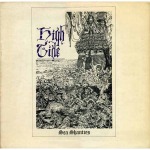 The approach these bands took was to incorporate distorted guitar sounds and heavy metal playing with other instruments, usually a Hammond organ but in the case of High Tide, a violin, and then create longer songs with extended instrumental sections that often referenced classical music (Baroque or Romantic) and at times leaned towards jazz. Volume and virtuosity, imagination and intensity. These bands were not the only ones bridging the two styles. Necromandus could be seen opening for Yes or Black Sabbath and were once said to be like “Yes plays the hits of Black Sabbath”.
The approach these bands took was to incorporate distorted guitar sounds and heavy metal playing with other instruments, usually a Hammond organ but in the case of High Tide, a violin, and then create longer songs with extended instrumental sections that often referenced classical music (Baroque or Romantic) and at times leaned towards jazz. Volume and virtuosity, imagination and intensity. These bands were not the only ones bridging the two styles. Necromandus could be seen opening for Yes or Black Sabbath and were once said to be like “Yes plays the hits of Black Sabbath”.  T.2. and Jericho (a.k.a. Jericho Jones) were also fully capable of rocking all out with chugging power chords and screaming guitar solos and then switching gears to an acoustic number with classical piano, strings, horns, choir, or whatever suited their taste. Germany’s Eloy began as a hard rock group but by their second album were already deep into prog territory. Brits in Hamburg, Nektar, too crossed heavy rock with progressive thinking.
T.2. and Jericho (a.k.a. Jericho Jones) were also fully capable of rocking all out with chugging power chords and screaming guitar solos and then switching gears to an acoustic number with classical piano, strings, horns, choir, or whatever suited their taste. Germany’s Eloy began as a hard rock group but by their second album were already deep into prog territory. Brits in Hamburg, Nektar, too crossed heavy rock with progressive thinking.
As the seventies counted out the first few years, bands like Black Sabbath, Led Zeppelin, and Budgie as well as many lesser known bands were experimenting with more complex and varied songs. Some heavy rock artists went prog for a few years while other prog artists experimented with heavy rock. King Crimson included bombastic heavy music on their albums and Jethro Tull mixed acoustic rock with heavy electric rock while Emerson Lake & Palmer, Yes, and even Genesis managed to turn heavy rock into progressive art as they found ways to fit it into their songs when deemed appropriate. Though there may have been two distinct camps of rock sub-genres, both sides couldn’t resist borrowing techniques and ideas.
By 1974 / 75, two groups had emerged who could claim influence from both styles. Judas Priest experienced the early ‘70s as a “progressive heavy blues-based” band, according to founding member, Al Atkins. The first two albums by Priest capture the band in transition, moving from the experimental heavy rock style prevalent at the time toward a new approach to heavy metal. Indeed, music journalist, Martin Popoff, sees Judas Priest’s second album, “Sad Wings of Destiny” as the reinvention point of heavy metal, but the album still features some of the old progressive elements. 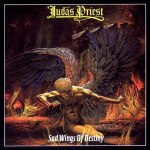 The other very important band is Rush, who began as a straightforward blues-based rock band and then quickly metamorphosed into a heavy rock band with a desire to build their music on progressive rock principles.
The other very important band is Rush, who began as a straightforward blues-based rock band and then quickly metamorphosed into a heavy rock band with a desire to build their music on progressive rock principles.
Progressive metal is usually regarded as a musical style that emerged in the 1980’s and that is probably because many people consider true heavy metal to have emerged in the late seventies or early ‘80s. But the way I see it is that progressive metal is as old as proto-prog and proto-metal. Perhaps proto-progressive metal should be recognized as an apt moniker for the music of those bands of the late ‘60s and early ‘70s who attempted to create music that was both artfully complex and aggressively loud and bombastic.
Antecedents of Progressive Metal 1968 to 1976 – A Suggested Playlist
Iron Butterfly – In the Time of Our Lives
Vanilla Fudge – Some Velvet Morning
Deep Purple – Wring that Neck
Andromeda – Turn to Dust
High Tide – The Great Universal Protection Racket
T.2. – In Circles
Uriah Heep – Salisbury
Necromandus – Still Born Beauty
Eloy – Castle in the Air
Nektar – Crying in the Dark
Judas Priest – Epitaph / Island of Domination
Rush – By-Tor and the Snowdog


